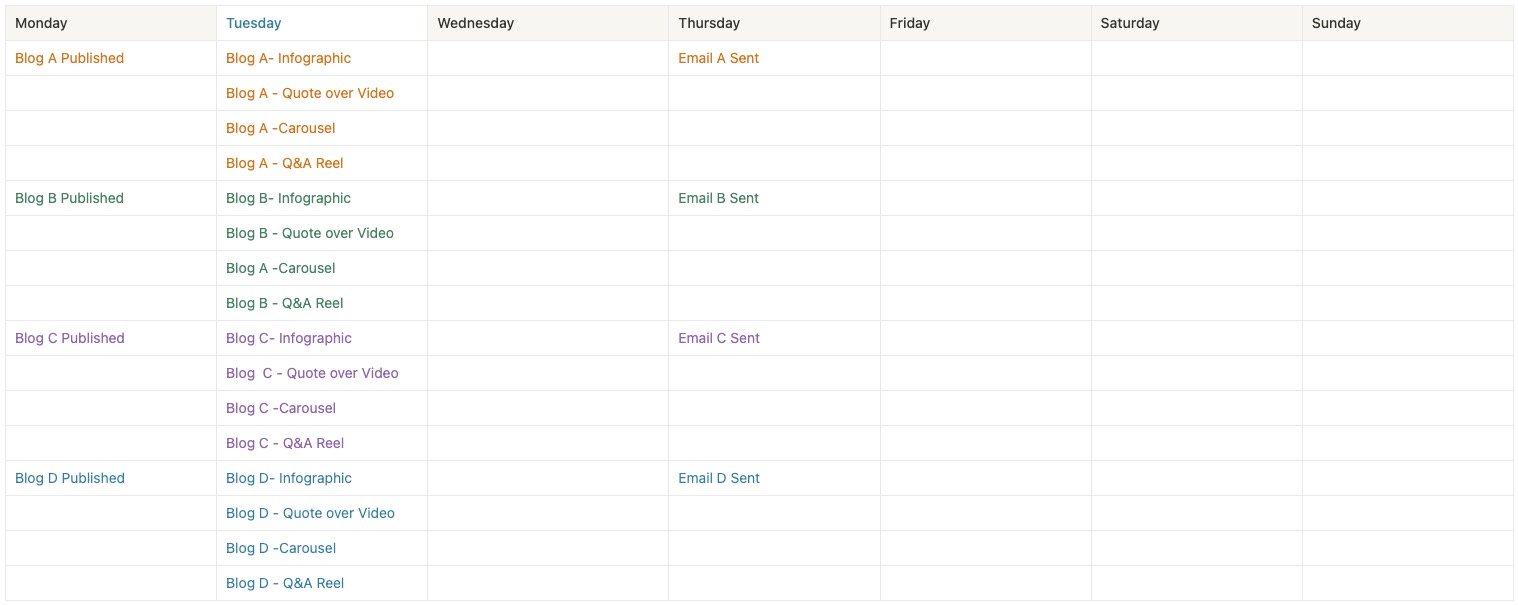Your Content Marketing Systems Needs the 1:1:1 Content Bundle Method
Have you ever felt like you're constantly spinning your wheels creating content, struggling to keep up with an endless stream of content? Trust me, I've been there for myself and our clients when I had my Digital Marketing Agency. The frustration of pouring your time and effort into creating content, only to feel like it's disappearing into the void before anyone sees it, only to need more ideas and content.
Unlocking the Power of Content Ecosystems
The problem here is twofold: idea generation and getting traction with the content you create rather than always needing more. Well, this can be solved by thinking of your content as an ecosystem rather than in silos.
Why Content Ecosystems Matter
Before we delve into the how let's understand the why behind content ecosystems. There's no exponential effect when each piece of your content operates in isolation. It's a flash in the pan, and then it's gone. Here's why this approach falls short:
Limited Exposure: Your brilliant ideas deserve more than fleeting glimpses. With systemizing, they can gain the exposure they deserve.
Idea Overload: The pressure to constantly produce fresh content can quickly lead to burnout. Juggling multiple platforms without connecting them with repurposed content is a recipe for exhaustion and diminished creativity.
Lack of Repetition: Have you ever heard the saying, "Out of sight, out of mind"? Without consistent reinforcement, your message risks fading into obscurity rather than leaving a lasting impression.
The Power of Our 1:1:1 Content Bundle Method
Now, let's talk systemization. The key to driving a robust content ecosystem lies in content bundling – transforming one core piece into a cohesive narrative across multiple channels. Here's a simple formula to remember that we call our 1:1:1 Content Bundle Method:
1 Blog = 1 Email = 1 Day of Social Posting (4 posts)
Start with a blog post as your foundation. This long-form piece of content positions you as a thought leader and can build trust as you share your ideas more deeply. Next, craft a personalized email that feels like you're sending that email directly to the person who opens it. Add a personal narrative to open the email, then position your blog as the solution and drive people to it to learn more. Finally, repurpose your blog content into four engaging social media posts, ranging from quotes and infographics to Q&A reels and videos.
1 Day of Posting = 4 Posts
Now, let's dig into the concept of "one day of posting." Whether you opt for a monthly, bi-weekly, or weekly blogging frequency, align your email and social media posting schedule accordingly. We think of our content in 4-week cycles.
Monthly "Lights On" Blogging Volume: If you haven't been consistent with your content, start with a monthly blog. The image below shows that if you keep posting one post per week for four weeks on a four-week cycle, you'll end up with one full day of social media posts for that cycle driven from one blog.
Bi-Weekly "Visibility" Blogging Volume: As you gain momentum, consider upgrading to bi-weekly blogging. With two blog posts per month, your email and social media presence doubles, amplifying your brand's reach and engagement. See the image below; you'll notice that two blogs generate two emails and two days of social media posts in a 4-week cycle. When the posts generated from one blog run out, there's a new one to backfill in its place.
Weekly "Thought Leadership" Blogging Volume: Reach the pinnacle of content consistency with weekly blogging. Four blog posts per month translate to a robust, weekly email strategy and four dedicated days of social media amplification, establishing your brand as a thought leader in your niche. Like the 2-blog-a-month strategy, you can see you continuously backfill with social media posts from the new blog on the day your posts expire from a previous blog.
Your Action Plan
Armed with this knowledge, it's time to put your content marketing system into action:
Assess Your Current Strategy: Take stock of your existing content efforts and identify areas for improvement.
Choose Your Volume of Media: Determine the blogging frequency that aligns with your resources and goals – whether it's monthly, bi-weekly, or weekly.
Create Your Content Calendar: Map out your blog topics, correlating email narratives and social media themes for the upcoming month(s).
Repurpose and Amplify: Transform each blog post into an email to your list and a series of four captivating social media posts to fill one day of the week.
Consistency is Key: Stick to your posting schedule religiously, nurturing your content ecosystem with care and dedication.
Hurray! You're now equipped with the tools and insights to revolutionize your content marketing game! By harnessing the power of content ecosystems and stop thinking of things in silos, you'll not only amplify your brand's voice but also forge deeper connections with your audience across every touchpoint. Let's do it! Unleash your creativity, and watch your content soar to new heights of success. And, of course, if you'd like to implement a Marketing Operating System (MarketingOS) in your business, reach out to me! We'll either start you with the system framework, and you can self-implement it, or we can build a custom marketing for your business.
Let’s Meet Up!
Our Simple Marketing Systems will streamline your content marketing to be more effective and efficient. You can engage with this framework with two different levels of support:
Custom Content Strategies: Custom annual editorial calendars and 90-day detailed content calendars tailored to your brand complete with trainings, ChatGPT prompts and Canva templates.
Creative Agency OS: End-to-end operating system for your creative agency to guarantee profitability and scalability. Includes project management, time & people management, client boarding, quoting, job costing, staff training & onboarding, and more.





